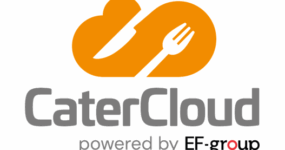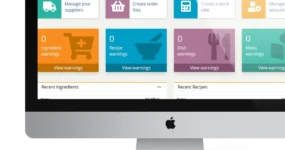
Increasing costs is something that none of us can hide from but as an industry that has been hit hard with the rising costs of not only utilities but food, ingredients, and services, just how can catering and hospitality businesses keep a track of profit margins?
Maximising value and efficiency for all is at the core of what we do, we have been collaborating with our clients for 20 years to help them improve their profit margins and keep sight of the little things that make a difference. Here are some top tips to help keep food costs down and profits up:
-
- Utilise seasonal produce
There are many benefits to eating produce that is in season, one of which is taste. This is especially true for fruit and veg which when shipped from abroad, often have flavour and freshness compromised due to being picked too early.
Out of season produce shipped from abroad can result in you paying higher costs due to storage and the increased food miles it takes to get to you, therefore seasonal produce is often more cost effective. When fresh local produce is picked at peak harvesting time with fewer food miles to get to your plate, it not only tastes better, but you are also supporting local farms too.
-
- Consider alternative cuts of meat or meat alternatives
Meat often represents 30% of the dish but can cost as much as 70% of the total value of the dish itself. Being creative with the meat in your dishes can be an effective way to increase profit margins, for example, finding cheaper alternative cuts can be a fantastic way to reduce cost. Examples of cheaper cuts of meat include skirt steak, lamb shoulder, as well as pork belly and ribs.
Some offcuts of animals that have not been favoured throughout the UK in recent decades are increasing in popularity, such as kidneys, offal, and tripe. This, in part, is thanks to high end chefs reintroducing these items on their menus and presenting them in new and interesting ways. Tripe for example, is low in calories and has more protein than a piece of steak, so in theory is a great alternative if cooked well.
The increasing numbers of people moving to vegan and vegetarian diets is great news for food providers; offering more meat-free recipes on your menus can help you reduce costs with the omission of meat making recipes considerably cheaper.
-
- Avoid wastage
Reducing food waste in your kitchen is not just the right thing to do for the environment, it helps to reduce costs in your business.
Measure food waste by tracking the food you use and what is not used; overproduction is often the root cause of increased food costs and reduced profit margin. Keep an accurate log of food waste going into the bin as calculating the cost of this waste can be a true revelation for your team.
Have a plan for excess food. Predicting customer demand is more of an art than a science; as such, restaurant and catering kitchens will often find themselves with extra ingredients. To avoid costly wastage, ensure your chefs have a plan to create new dishes out of excess ingredients and even utilise them to replace high-cost ingredients.
-
- Good stock control
Stock control helps you see how much stock, (whether that be food or non-food items) you have at any one time and how to keep track of it. Processes are often put in place to control inventory, minimise costs, and manage future stock requirements.
When you have control of your stock, you will see improvements in customer service, warehouse efficiency and visibility of profit margins. Stock control is put in place to meet customer demand in a more efficient manner and decrease any cost associated with over-ordering.
Stock control also provides insights into your product offering and customer demand, showing what menu items are selling well and which are not as popular. These insights can help you tailor your offering to your customers and reduce the amount of waste from unutilised ingredients.
-
- Ordering correct levels
An electronic ordering system, such as our Freshmarkets purchasing platform, allows your team to place orders directly with our network of suppliers through one online system, with one consolidated monthly invoice. This saves you considerable time and resource as orders no longer need to be written down and phoned through to suppliers, making the entire process more efficient.
Our procurement system allows your teams to order within a pre- agreed budget, and head office are alerted for high orders or excessive costs. This helps you to manage costs at site level, and we provide analytics and reporting tailored to your needs to help you manage site spend and spot any anomalies.
-
- Review portion sizes
Overzealous staff could be unwittingly giving away food by not measuring or serving the portion sizes correctly within recipes, so controlling this element by using our leading-edge menu management and costing system, CaterCloud, can help with cost savings. It provides accurate and clear guidance on portion sizes and ingredient measurements.
Once your recipe is entered into the CaterCloud system it can be stored and shared across your estate, or you can allow your chefs to have access to amend or create their own menus using or bespoke user permission settings.
Maximising efficiency and value are our core purpose and using our advanced procurement and menu management solutions, expertise, and knowledge of our sectors, we are ready to save you TIME and MONEY.


